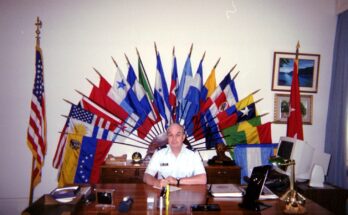Three countries used women pilots in WWII – England, the United States, and the Soviet Union. In the U.S. and England, they were primarily used to deliver aircraft to needed locations. Some were used as test pilots for new aircraft. In the United States, more than 1100 women flew in an organization known as “ Women’s Airforce Service Pilots”, the WASPs. They were civil service employees, not military members. The WASPs were formed on 5 August, 1943 when the Women’s Flying Training Detachment and the Women’s Auxiliary Ferrying Squadron merged. They were disbanded in the Fall of 1944 as the war was nearing its end and enough men were available to fill flying needs. WASPs are credited with delivering more than 12,000 aircraft of 78 different types, including B-17s, B-24s, and B-29s. After the war, the WASPs got little credit for their service. It was not until 1977 that they were given veterans status. After WWII, the military had little interest in women aviators. Women were not allowed to enroll in military pilot training until 1977 when a group of ten graduated. It was not until 1993 that Jeannie Leavitt became our first woman fighter pilot flying the F-15 Strike Eagle.
In Russia, women flew into combat. Maria Raskova, often referred to as Russia’s Amelia Earhart, convinced Stalin to send women into aerial combat. The Soviets established three all-women flying regiments. They flew everything including fighters, bombers and cargo aircraft. Two Russian women became “aces” shooting down German airplanes. The most famous women’s unit was the 588th Night Bomber Regiment. The Germans labeled them the “Night Witches”. The women of the 588th flew PO-2 bi-wing airplanes each carrying 770 pounds of bombs and incendiary shells. They flew their first mission on 28 June, 1942 when they bombed the lead elements of German units invading Russia. They flew only at night, low and slow, in their wood and fabric planes. The sound made by the PO-2 was much like the sound of a broom sweeping, hence the Night Witches label. Often the women would temporarily idle their engines and glide silently in the dark while bombing German troops. Women pilots dropped more than 23,000 tons of bombs on the Germans. Thirty of the women lost their lives. During the course of the war some women flew as many as 800 missions, often three in one night. They flew their last mission on 4 May, 1945 as the Russians approached Berlin. After the war, they were not allowed to fly in the Soviet Victory Parade as their planes were deemed “too slow”. Maria Raskova did not survive the war. Her ashes are buried in the Kremlin.



